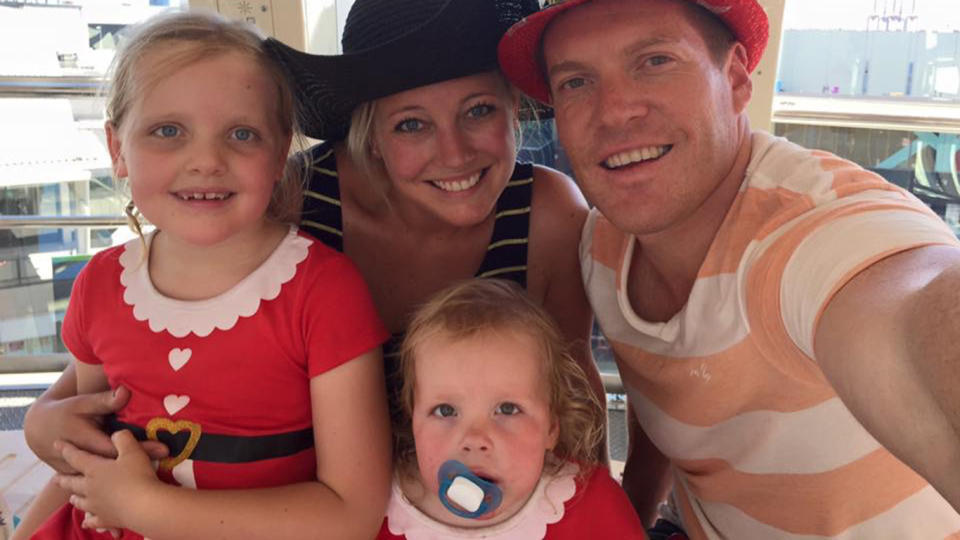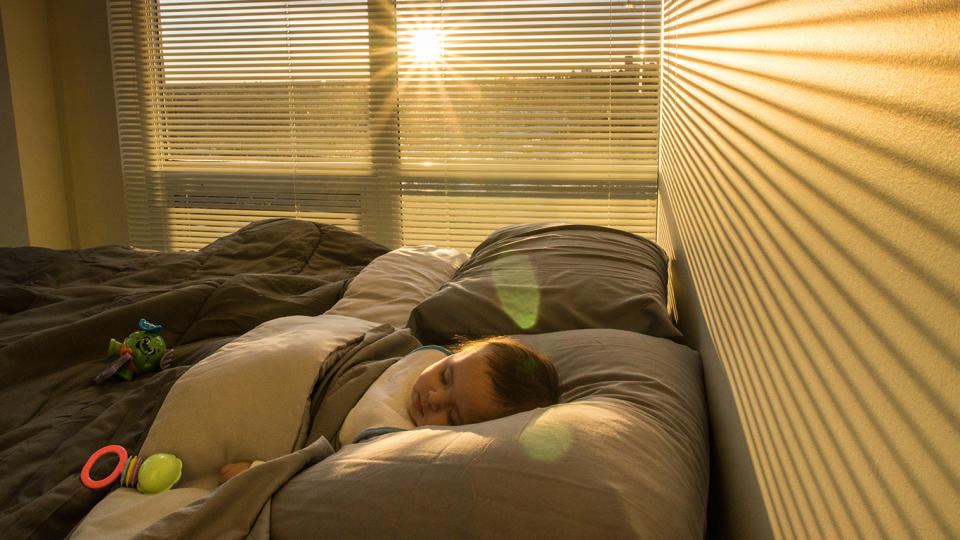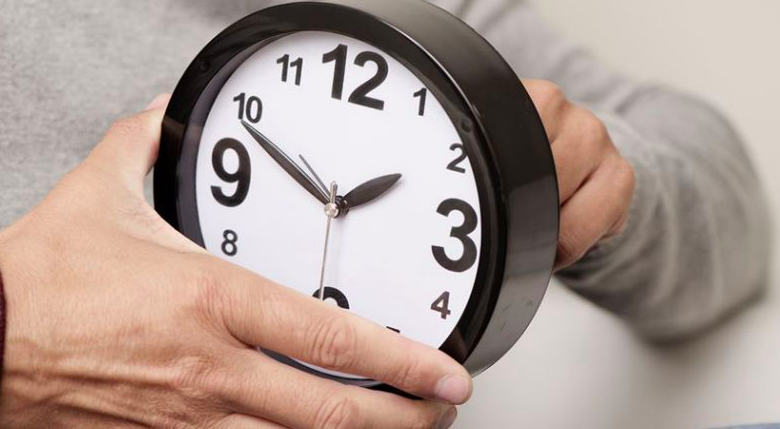Expert reveals how daylight saving impacts our sleeping patterns
With daylight saving kicking in for some Australian states on Sunday, clocks will go forward one hour, meaning extra time at the end of the day to enjoy that backyard barbecue or glass of wine on the front porch.
But a sleep expert says it can also throw our body clocks out of whack, and the extra daylight can cause havoc for parents trying to get their little ones to sleep.
Melbourne-based sleep consultant and mother-of-two Emily Duffell, the author of the book Bedtime Battles No More, says it can be a struggle to get the little ones into a regular sleep pattern at the best of times.
She and her partner invented the Sleep Starz clock, a touch-screen device that uses images to help show children that it’s bedtime, after having trouble with her firstborn daughter, who was a “terrible sleeper”.

“It goes against our natural body clock to go to sleep when it’s still light outside. It’s why daylight saving is such a big deal for parents with little kids,” she says.
“You can understand why children kick up a fuss; they don’t want to go to sleep because it’s not natural.
“An hour time change doesn’t seem like a lot, but it’s actually quite a big deal to our natural body clock.”
When does daylight saving start in NSW and other states?
Clocks will go forward at 2am on Sunday, October 7 in New South Wales, South Australia, Victoria, ACT and Tasmania.
For Queensland, Northern Territory and Western Australia residents, who do not adopt daylight savings, it is business as usual.
Daylight Saving Time will change back in exactly six months on April 7.
How does daylight savings affect our bodies?
“The body clock responds to light and dark,” Emily says.
“The darkness naturally brings out melatonin, the chemical in our bodies also known as the sleeping hormone.
“We encourage families to dim the lights 30 minutes before they want their children to go to bed, just so that chemical starts coming out through the body and gets them feeling sleepy.

“But that’s really hard to do during daylight saving time. Not everybody has blockout blinds to keep the light out.
“It’s the same for an adult; you still need the production of that melatonin hormone to feel sleepy.”
So, what are Emily’s tips to help get your kids to sleep during daylight saving?
Start making changes now
Change the bedtime routine by 10 minutes every night.
“Bring bedtime back by 5-10 minutes each night, start the bedtime routine 5-10 minutes earlier,” she says.
“Do it as a gradual process over one to two weeks. Don’t expect your children to adjust straight away.

“Children don’t notice little changes, so if you keep the same bedtime routine but just bring it forward slightly, they’ll adapt.”
Manage your expectations
“A lot of parents are finding that their children are waking up between 4am and 5am because it’s getting lighter outside earlier,” Emily says.
“The 5am mark is usually the coldest part of the day, but it’s also the point during a 24-hour period where our body temperatures are at their lowest.
“So your kids may actually be waking up because they’re cold. It’s important to make sure the room temperature is right at this time of the morning.”
Don’t let the kids stay up late
“Keeping the kids up later isn’t going to work, because they’ll still wake up early,” Emily says.
“It doesn’t always follow that if the kids go to sleep later, they’ll sleep in. It’s a really common misconception.”
What about when daylight saving ends?
“The end of daylight saving is also a busy time for sleep consultants, because it’s not as if your kids automatically go back to their previous patterns,” Emily says.
“You have the same problem, but in reverse. You’ve got the darkness on your side to help you fall asleep, but again, body clocks have been adjusted to work with daylight savings hours.
“You need to readjust again to get back that hour.”
Daylight saving isn’t automatically “bad for you”
“Daylight saving can be great for family life, especially when the kids are a bit older. You can stay outside, have a barbecue, enjoy the warmer weather.
“As a sleep consultant I’d say, yes, it does work against your natural body clock, and a good night’s sleep is so incredibly important for our overall health.
“But you can enjoy the advantages of daylight savings; it’s just a matter of adapting your children’s sleep patterns.”



